Tues: 8:30am - 3:00pm
Wed: 12:00pm - 6:00pm
Thurs: 8:30am - 3:00pm
Fri: Closed
Sat: 8:30am - 12:30pm
Sun: Closed
Greenvale, NY 11548
The Top 10 Skin Conditions Treated with Telemedicine


Many common skin conditions can be diagnosed by sight. This makes telemedicine a valuable healthcare tool both for patients and the dermatologists who treat them.
A virtual visit is safe and convenient, using modern technology you probably already own – like a smart phone, tablet or a laptop with a web camera. All you need is an Internet connection, which you also already have if you’re reading this. With teledermatology, you speak directly to a dermatologist without the inconvenience of travelling to a medical office. This saves time, too.
A dermatologist can diagnose and recommend a course of treatment for many common skin conditions just by examining the affected area. There’s no need to pull, poke or even touch the skin. A visual inspection is often enough to diagnose common ailments.
Virtual visits to the dermatologist became popular during the pandemic, mainly for safety reasons. But soon patients discovered how convenient telehealth can be. If necessary, your dermatologist may recommend an in-person visit based on any evidence of more serious conditions, but many skin problems are well-suited to treatment via virtual visits.
Here are 10 of the most common skin conditions that can be diagnosed through telemedicine and virtual care:
Acne
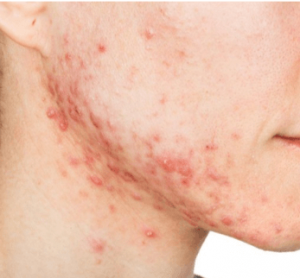

Pimples and blackheads are obvious even to the untrained eye. Your dermatologist can evaluate the severity in a virtual visit and recommend a treatment plan. This can range from changes in your skin care routine to diet and prescriptions for medications. Your dermatologist will contact the pharmacy you choose for preparation of your acne medicines. You receive acne care from the comfort of your own home.
Eczema (Atopic Dermatitis)
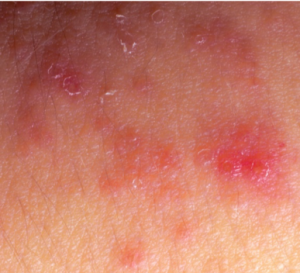

An itchy rash on the arms and the back of the knees may be eczema, although the rash can appear anywhere. About 10% of the US adult population will develop eczema at some point, reports the American Academy of Dermatology. Your dermatologist can identify eczema through a video visit or from photographs that you take of the affected area and upload to the dermatologist’s website for evaluation. It’s a simple process. After a diagnosis, your dermatologist can prescribe medicated creams to relieve the itching and discuss basic changes to your hygiene routine, including switching to another brand of soap, for example, and avoiding skin contact with detergents and household cleaning products.
Hives and Rashes


Red welts (hives) and skin rashes are the body’s response to an allergic reaction, typically from food, medication or an irritant in the environment. Your dermatologist during a telemedicine visit can identify hives and rashes from a visual inspection via photographs or video. You’ll often be asked to answer a series of questions about recent contact with any plants, or changes in diet, habits and living conditions. This is designed to pinpoint the cause of the hives or rash. Because hives and skin rashes are notoriously itchy, a telemedicine visit from the comfort of your own home may be ideal for children suffering from these conditions.
Shingles
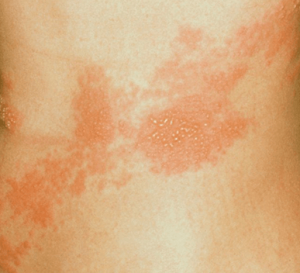

These painful blisters are caused by reactivated chickenpox virus. If you had chickenpox as a child, the residual virus can trigger a shingles outbreak years or even decades later in life. Vaccines against chickenpox can reduce – but not completely eliminate – the risk of developing shingles. The virus causes the skin to blister in long strips, often around the torso.
In the blister stage shingles are extremely contagious, so a telemedicine consultation with your dermatologist is the best plan of action. A visual inspection of the affected area is usually sufficient to identify shingles. Treatment involves antiviral and pain medications.
An outbreak of shingles is a serious skin condition that can be dangerous if it spreads to the face, especially near or around the eyes. Talk to your dermatologist right away if you experience symptoms of shingles.
Impetigo


This highly contagious bacterial skin infection mainly affects young children. Either Staphylococcus (staph) or Streptococcus (strep) bacteria is the cause. Impetigo can often be diagnosed and treated with a telemedicine visit from home, which is a great advantage in preventing the spread of the infection to other children. Prescription antibiotics are the common treatment for Impetigo.
Hair Loss
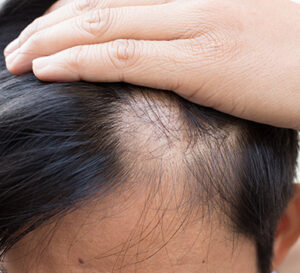

Women and men can be affected by hair loss, for a variety of reasons. Diagnosis can begin with a teledermatology visit. An in-office follow up may be necessary to run a blood test that can rule out a hormonal imbalance as the reason for hair loss. Your dermatologist can use telemedicine to identify more common causes of hair loss, including male pattern baldness and scalp ringworm, which is not a worm at all but a fungal infection that can cause itching and spotty hair loss.
Scalp ringworm is highly contagious, which makes a telemedicine visit even more useful. Treatment involves oral medicines and medicated shampoo to eliminate the fungus. Your dermatologist can issue these prescriptions directly to the pharmacy of your choice, so there’s no need for an office visit.
Psoriasis


This skin disease causes red, itchy scaly patches, most commonly on the knees, elbows, trunk and scalp. Psoriasis is a common, long-term (chronic) disease with no cure. It tends to go through cycles, flaring for a few weeks or months, then subsiding for a while or going into remission, according to The Mayo Clinic. Roughly 7 million U.S. adults live with psoriasis. The condition can be readily managed through telemedicine visits, from the initial diagnosis to follow-up care. Photos or video are often enough to diagnose psoriasis, though in some cases you may need to make an office visit to your dermatologist. Once a treatment plan is in place, including any medications, going forward your condition can be monitored with virtual visits.
Rosacea


This skin condition presents as a reddening of the face, sometimes causing the formation of pimples. A video visit with your dermatologist is usually all that’s necessary to make a diagnosis. Symptoms are typically treated with prescription medications, which can be ordered for you. The dermatologist may also send information over the Internet about managing your rosacea.
Cold Sores
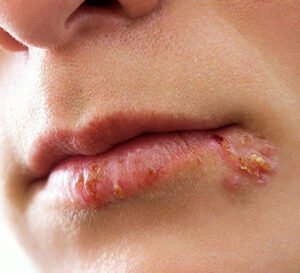

Cold sores, also known as fever blisters, are a common viral infection. These fluid-filled blisters may be painful to the touch and leave a crusty scab after bursting. Cold sores usually go away after a week or two without leaving a scar. Meanwhile, they are unsightly and uncomfortable. A virtual visit is often enough for your dermatologist to identify cold sores. Treatment involves prescription medications and avoiding close contact with other people, as the viral infection is highly contagious (another good reason for telemedicine – keeping people safe).
The convenience and safety of teledermatology make it an attractive option for diagnosing many common skin conditions. Just as you would during an in-person visit, it’s important to provide complete information and share with your dermatologist any other health conditions you may have, even if they are unrelated to a skin problem.
Skin Cancer
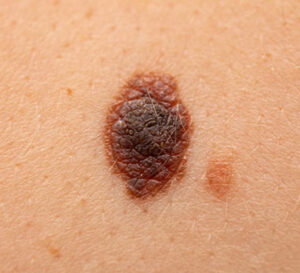

Teledermatology was originally conceived as a way to diagnose melanoma among people in rural communities and isolated areas that lack access to a dermatologist. Once people discovered the convenience of telemedicine, especially during a public health crisis, virtual visits for skin care really began to take off. Skin cancer is the most common melanoma in the United States, the CDC reports. Effective treatment begins with early detection.
Your dermatologist can identify suspicious skin lesions during a virtual visit via video or from photos you upload to a secure website. If the condition appears cancerous, a follow-up visit in person will be necessary. Depending on the severity, your dermatologist may remove the lesion with same-day outpatient surgery or perform a biopsy to examine the tissue sample under a microscope for more extensive evaluation. Either way, the process can begin with the ease of a virtual visit.
Let Walk-in Dermatology Take Care of You and Your Skin
If you have concerns about any skin condition and need dependable answers fast, you don’t have to wonder, worry or wait. Walk-in Dermatology is here to keep you healthy. Our team of dermatologists and experienced medical staff will address your concerns and provide the necessary care for all your skin conditions. You can schedule an appointment with us online or we can set up a Video Visit and even prescribe medications remotely. Contact us today.








